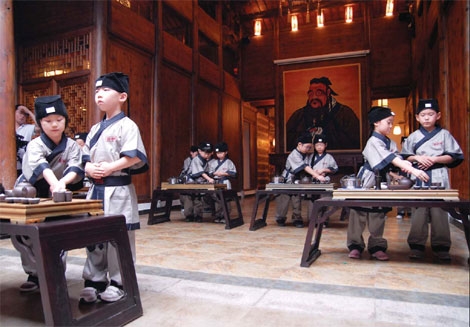truthseeker2010
SENIOR MEMBER

- Joined
- Dec 7, 2010
- Messages
- 5,167
- Reaction score
- -8
China ‘Winning the Green Economy Race,’ UN Climate Chief Says
China is pushing ahead of the U.S. and Europe in developing clean- and low-carbon energy as a way to spur the nation’s economy, the diplomat leading United Nations Climate talks said.
“China is going to leave all of us in the dust,” Christiana Figueres, head of the UN Framework Convention on Climate Change, said at a panel discussion today at the World Economic Forum today in Davos, Switzerland. “They’re committed to winning the green economy race.
China last year boosted spending on low-carbon energy by 30 percent to $51.1 billion, ‘‘by far the largest figure for any country,’’ Bloomberg New Energy Finance said Jan. 11. Global accounting firm Ernst & Young said in September that China for the first time overtook the U.S. in its quarterly index of the most attractive countries for renewable energy projects.
‘‘You can leapfrog -- you don’t have to follow the model of the north,’’ Figueres said. ‘‘China is showing this.’’
Chinese officials including lead climate negotiator Su Wei have said the country will push energy efficiency in its next five-year plan to be detailed this year.
At today’s panel, Mexican President Felipe Calderon said the world is waiting for action from the U.S. in fighting climate change, while European Union Commissioner for Climate Action Connie Hedegaard said that U.S. businesses stand to lose out by stalling in taking action.
‘‘American business should be aware that we’re up here saying this is a race,” Hedegaard said. “It’s bad economics, it’s bad business not to be among the front runners but to be hesitating. I hope that even more American business people would understand that they need to put the pressure on their politicians."
China ?Winning the Green Economy Race,? UN Climate Chief Says - Bloomberg
China is pushing ahead of the U.S. and Europe in developing clean- and low-carbon energy as a way to spur the nation’s economy, the diplomat leading United Nations Climate talks said.
“China is going to leave all of us in the dust,” Christiana Figueres, head of the UN Framework Convention on Climate Change, said at a panel discussion today at the World Economic Forum today in Davos, Switzerland. “They’re committed to winning the green economy race.
China last year boosted spending on low-carbon energy by 30 percent to $51.1 billion, ‘‘by far the largest figure for any country,’’ Bloomberg New Energy Finance said Jan. 11. Global accounting firm Ernst & Young said in September that China for the first time overtook the U.S. in its quarterly index of the most attractive countries for renewable energy projects.
‘‘You can leapfrog -- you don’t have to follow the model of the north,’’ Figueres said. ‘‘China is showing this.’’
Chinese officials including lead climate negotiator Su Wei have said the country will push energy efficiency in its next five-year plan to be detailed this year.
At today’s panel, Mexican President Felipe Calderon said the world is waiting for action from the U.S. in fighting climate change, while European Union Commissioner for Climate Action Connie Hedegaard said that U.S. businesses stand to lose out by stalling in taking action.
‘‘American business should be aware that we’re up here saying this is a race,” Hedegaard said. “It’s bad economics, it’s bad business not to be among the front runners but to be hesitating. I hope that even more American business people would understand that they need to put the pressure on their politicians."
China ?Winning the Green Economy Race,? UN Climate Chief Says - Bloomberg




















